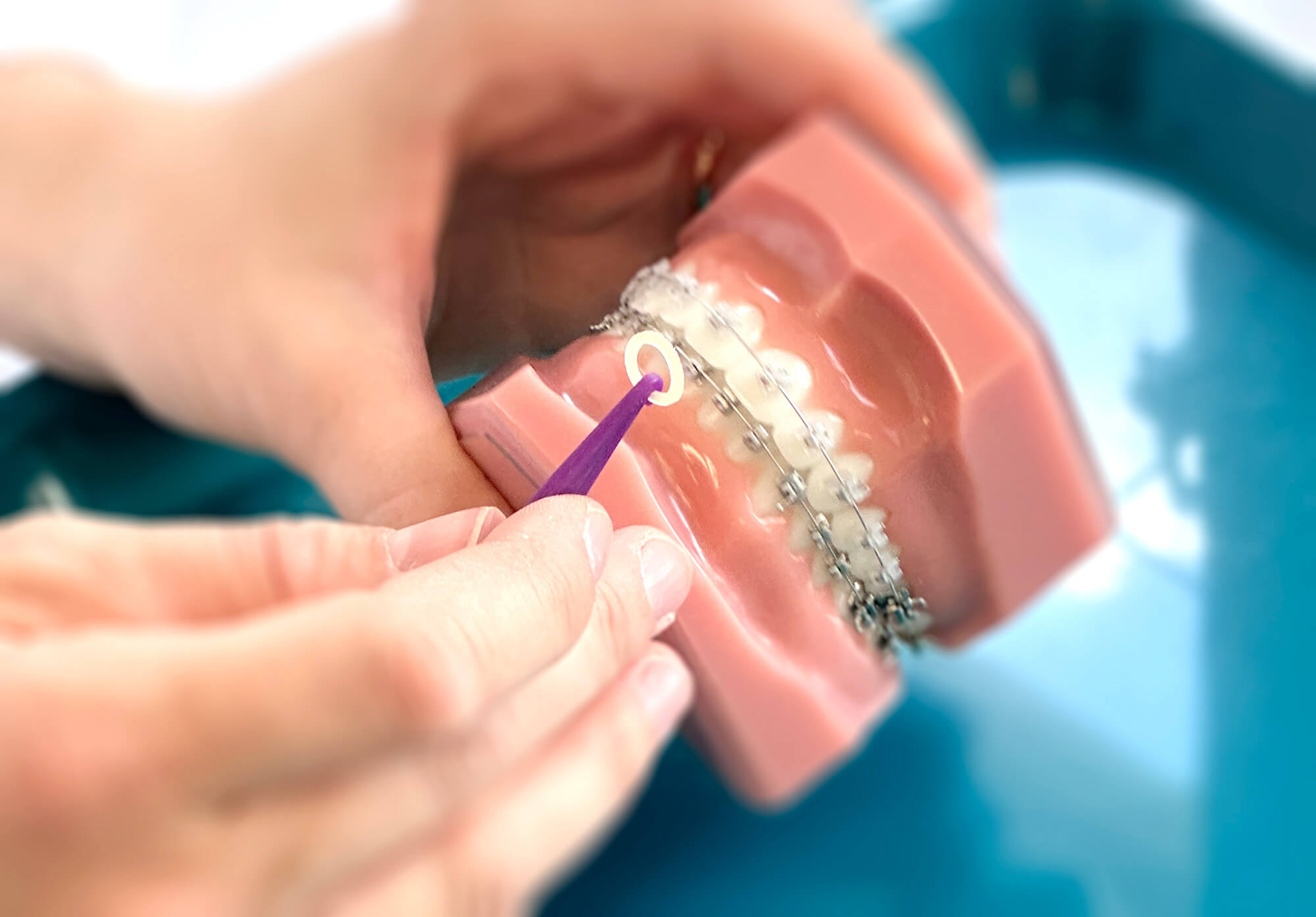Gummizüge - Kieferorthopäde Dr. Steffen Lenz in Deisenhofen im Raum München
ELASTIC BANDS
WHAT YOU SHOULD KNOW
Elastics are an indispensable aid in modern orthodontics and are crucial to the success of treatment. These small but effective elements, known as elastics, are available in different sizes and strengths to meet the individual needs of our patients. On the one hand, they are used within a jaw to close gaps or rotate teeth. Elastics connecting the upper and lower jaws are used when the positional relationship of the jaws needs to be affected or teeth need to be moved toward each other.
It is important to note that elastics for braces should be worn almost around the clock. They should be removed only for eating and brushing teeth and then replaced with new ones. It is recommended to change elastics at least 2-3 times a day, so we always make sure that our patients have enough elastics available. Especially towards the end of orthodontic treatment, regular and consistent use of elastics is essential to successfully complete the treatment. The more consistently the elastics are worn, the sooner you can enjoy the radiant smile you have always wanted.
CLASS I
ELASTIC BANDS
Class I elastics are used within a jaw, from a molar to a canine or arch hook. Their correct and regular use is crucial for the precise adjustment of tooth positions.
CLASS II
ELASTIC BANDS
Class II elastics connect the upper and lower jaws and are usually stretched from the last lower molar to the upper canine or cuspid. They are essential for establishing a harmonious relationship between the upper and lower jaws.
CLASS III
ELASTIC BANDS
Class III elastics, stretched from the last upper molar to the lower canine or hook, are used to correct underbites. Their correct and consistent use is essential for successful tooth correction.
UP-AND-DOWN
ELASTIC BANDS
Up-and-down elastics, hooked in triangular or other shapes between the upper and lower jaws, help move the teeth toward each other and close open bites. Their correct use and regular control are crucial for effective tooth correction.



